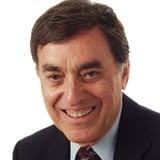Eventually, a reliable vaccine will be developed, the coronavirus will be history, and we’ll once again be able to pick stocks based on the relatively predictable factors such as revenue and earnings growth, explains Harry Domash, income expert and editor of Dividend Detective.
In the meantime, I’m going to suggest a portfolio of four closed-end funds that will pay you monthly dividends equating to 8% to 10% dividend yields while you wait.
Dividend yield is similar to the annual interest rate that you receive on a money market or savings account. Calculate it by comparing the annual dividends you receive to the price you paid for the stock or fund. For instance, your annual dividend yield would be 10 percent if you paid $10 per share for a stock or fund paying $1 annually.
While the closed-end funds I’m going to describe are paying yields much higher than the 1% or so banks are currently paying, the downside is that your investment is not U.S. Government insured. You could lose everything in a total market collapse.
Closed-end funds (CEFs) are similar to conventional mutual funds. However, unlike conventional funds that create new shares as needed, CEFs only issue a fixed number of shares at the IPO, and after that, those shares trade on the open market just like stocks.
Unlike ETFs, CEFs can use leverage (borrowed funds) to enhance returns. For instance, they might borrow at 2% to purchase bonds returning 4%. That’s why closed-end funds typically outperform ETFs focusing on the same market sector.
For instance, my Dividend Detective newsletter tracks both high-income CEF and ETF portfolios. Last year, the ETF monthly income portfolio returned 17 percent compared to 35 percent for the closed-end fund portfolio.
While conventional mutual funds and ETFs trade close to the per-share value (net asset value or NAV) of their holdings, closed-end funds might trade at a premium (above) or discount (below) their NAVs.
Well-known CEFs trade sometimes trade at substantial (20% to 50%) premiums. It best to avoid those and stick with funds either trading below their NAVs or at small premiums (less than 10 percent).
These top performing funds (based on three-year returns) recently traded near their net assed values and are paying monthly dividends equating to 8.0% to 10% yields.
AllianzGI Diversified Income & Convertible (ACV) holds a mix of stocks, corporate bonds, some convertible into equity, and preferred stocks. The fund returned (dividends plus capital gains) 10% over the past 12 months and averaged 13% annually over the past three-years. Pays an 8.7% dividend yield.
Tekla World Healthcare (THW) holds healthcare related equity and debt securities. Returned 28% over the past 12-months and averaged 11% annually over three years, 9.6% dividend yield.
Calamos Strategic Total Return (CSQ) holds mostly U.S.-based stocks, convertible securities and high-yield corporate bonds. Returned 9% over 12 months and averaged 10% annually over three years, 8.9% yield.
Calamos Convertible & High Income (CHY) holds a mix of convertible (to stocks) bonds and non-convertible below investment grade bonds. Returned 15% over 12-months and averaged 8% annually over three years, 9.1% yield.
As always, historical performance doesn’t predict the future. Do your own research. The more you know about your funds, the better your results.


















